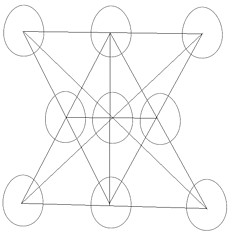The statement “no statements are true unless they can be proven scientifically” cannot be proven scientifically.
Author: Greg Ross
Collateral Damage
In 1958 the U.S. Air Force mistakenly dropped an atom bomb on South Carolina. A B-47 was over Mars Bluff when navigator Bruce Kulka accidentally released the device. Its fissionable core was stowed elsewhere, fortunately, but the bomb still contained thousands of pounds of conventional explosives. It fell 15,000 feet into the home of William Gregg, where it created a mushroom cloud and left a 75-foot crater.
Presumably they raised his insurance rates.
Breakfast of Champions
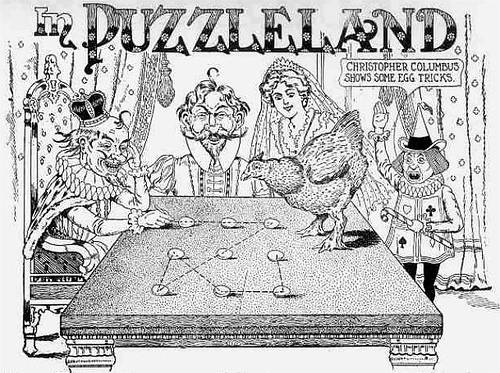
“Christopher Columbus’s Egg Puzzle,” as it appeared in Sam Loyd’s Cyclopedia of Puzzles (1914):
The famous trick-chicken, Americus Vespucius, after whom our great country was named, showed a clever puzzle wherein you are asked to lay nine eggs so as to form the greatest possible number of rows of three-in-line. King Puzzlepate has only succeeded in getting eight rows, as shown in the picture, but Tommy says a smart chicken can do better than that!
Can you?
Unquote
“I’m sorry, Mr Kipling, but you just don’t know how to use the English language.” — San Francisco Examiner, rejecting a submission by Rudyard Kipling, 1889
Oops
Ohio didn’t become a state until after World War II. Thomas Jefferson had approved its boundaries in 1803, but Congress didn’t start formally admitting new states until nine years later. It was 1953 before anyone realized this, and Eisenhower hastily recognized the Buckeye State retroactively. Hopefully no one noticed.
Great Balls of Fire
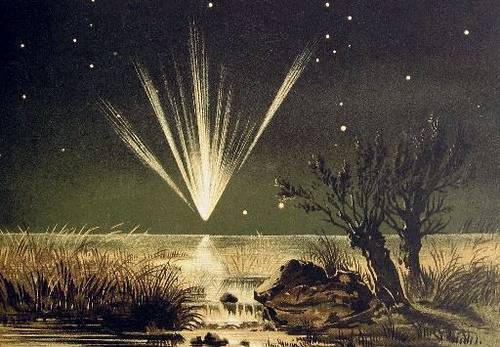
1861 came with its own entertainment: Earth passed through the tail of a brilliant comet. Observers watched streams of material converge toward its distant nucleus, and by day its gas and dust obscured even the sun.
Sorry you missed it? Sit tight — it’ll be back in 200 years.
Not So Fast
31
331
3331
33331
333331
3333331
33333331
… are all prime, but 333333331 = 17 × 19607843.
Hinterkaifeck
One day in March 1922, German farmer Andreas Gruber told two neighbors of a curious discovery. He had found traces in the snow leading from the forest to his farm, but none leading back. He’d also found a strange newspaper. The neighbors dismissed his story, and Gruber didn’t contact the police.
Four days later, when Gruber’s granddaughter failed to appear at school, some neighbors trekked to his farm. There they found six mutilated corpses: Gruber’s entire family and a female farmhand had been murdered with a pickaxe. An autopsy showed that the 7-year-old granddaughter had been badly injured in the attack but survived for several hours. She had lain in the straw amid the bodies of her family, pulling out her hair in tufts as she died.
That’s the whole story. Police have interviewed more than 100 suspects, one as recently as 1986, but to this day no one knows who killed Andreas Gruber’s family or why.
Dairy Queen
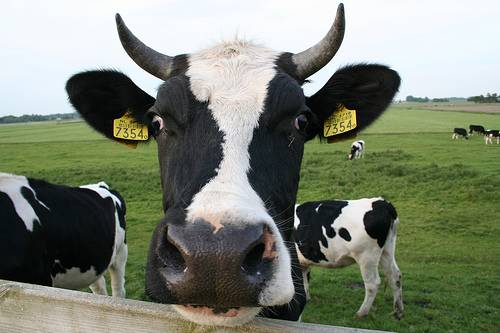
Every year, the citizens of Mount Horeb, Wis., celebrate the achievements of Elm Farm Ollie, a courageous Guernsey who in 1930 became the first cow to fly in an airplane.
Festivities include an opera called Madame Butterfat.
See For the Record.
Double-Take
What does this say?
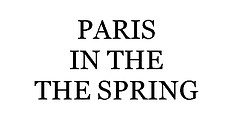
Read it again.

